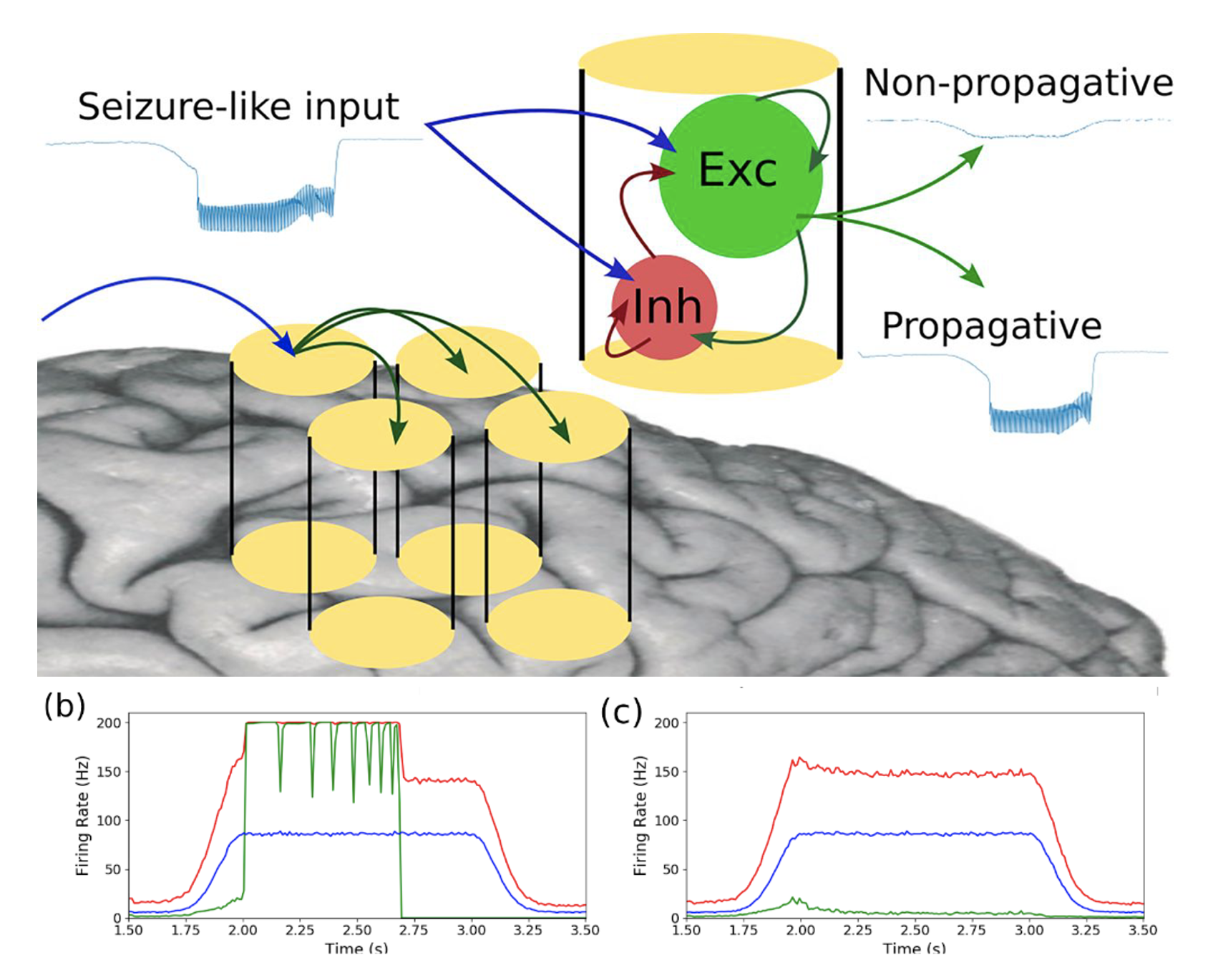- Research News
Researchers simulate epileptic seizure propagation in healthy tissue
10 February 2023
Researchers of the Human Brain Project have simulated how an epilepsy seizure spreads through healthy tissue in the brain, potentially increasing the precision of virtual predictive tools available to clinicians. The study, carried out by Damien Depannemaecker at the Paris-Saclay Institute of Neuroscience in France, has been published in the journal eNeuro.

“One of the main unsolved questions in epilepsy is how the seizure originating in the epileptogenic zone can invade normal tissue and propagate throughout the brain in a domino effect” says Depannemaecker. The researchers study epilepsy using The Virtual Brain (TVB), a software tool that creates “digital twins” of the brains of specific patients, allowing clinicians to make more informed decisions about therapy. “TVB works by simulating a network of nodes, each node representing a mass of tens of thousands of neurons of a brain region. We know that certain regions enable the spread of the epileptic seizures, while others stop them on their track as it passes through them” explains Depannemaecker. “In TVB, we don’t know exactly how individual neurons are behaving and interacting with each other in a specific region, only the emergent behaviour of the whole is captured by the node - a sort of ‘average’ of the individual neurons which are part of the region described by the node. So we tried approaching the question at a smaller scale”.
The researchers then simulated the neural network of a healthy node - up to 10 thousands neurons and their relative connections. “We found that some neurons have different behaviours when reacting to an oncoming seizure. This behaviour can be inhibitory, excitatory or switch between the two. Whether or not the node propagates the seizure depends on which of these structural and dynamical characteristics prevail depending on the underlying neural conditions”. This could explain why even healthy brain zones can propagate a seizure, or why the same area reacts differently to a seizure spread.
The model is currently not personalised on each patient, as it would be currently unfeasible to do so; however, it would be now possible to build a library of nodes according to their particular features and expected behaviour, and recognise if they reflect nodes observed in a specific patient.
Text by Roberto Inchingolo.
Reference: Damien Depannemaecker, Mallory Carlu, Jules Bouté and Alain Destexhe, A Model for the Propagation of Seizure Activity in Normal Brain Tissue, eNeuro, DOI: https://doi.org/10.1523/ENEURO.0234-21.2022



